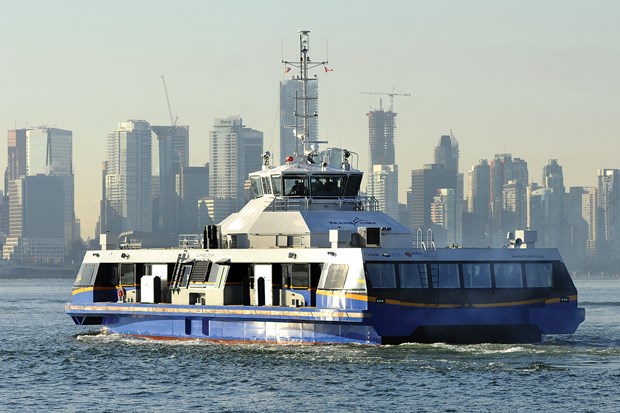A trip across Burrard Inlet aboard the SeaBus could become significantly cheaper in the coming years.
TransLink announced Monday the final recommendations of its fare review including scrapping the zone system for rapid transit lines like the SkyTrain, Canada Line and SeaBus. Instead, fares would be based on the number of kilometres travelled.
If adopted, it would mean crossing Burrard Inlet on the SeaBus would cost only $2.20 compared to the $4 it costs today – the same as it costs to take the bus over the Lions Gate Bridge or Ironworkers Memorial Second Narrows Crossing.
“We’re not giving the SeaBus any special treatment through this. All we’re doing is trying to make the way we price rapid transit in the gated system in our network is consistent. Right now the SeaBus is a short trip that just happens to cross a zone boundary,” said Andrew Devlin, TransLink’s manager of policy and development.
After the first five kilometres travelled on rapid transit, the cost per kilometer will creep incrementally upward to a capped rate about the same as a three-zone fare today. SeaBus travellers transferring to the SkyTrain or Canada Line should be able to make it as far as Granville Station or Vancouver City Centre station before the higher costs start to kick in.
The monthly pass system will also be updated giving daily transit riders options. Instead of buying a $126 monthly two-zone pass, North Shore commuters will be able to choose from 5-km, 7-km, 10-km, 13-km, 17-km or 20-plus-km monthly pass options that range from $93 to $172 per month.
In 2015, the transit authority dispensed with the zone system for buses making trips over the Lions Gate and Ironworkers Memorial Second Narrows Crossing cheaper for downtown commuters from the North Shore. At the time, City of North Vancouver Mayor Darrell Mussatto lobbied TransLink to apply the same prices to the SeaBus to keep prices equitable regardless of mode.
The flat rate for bus fares is expected to stay in place.
The changes are designed to be revenue neutral for TransLink.
TransLink is giving Lower Mainland residents until June 29 to comment on the proposed fare structure at translink.ca/farereview before revisions will be made and the plan sent to the TransLink Mayors’ Council and Board for adoption. If approved, the new fares should start rolling out over the next one to two years, according to TransLink.



